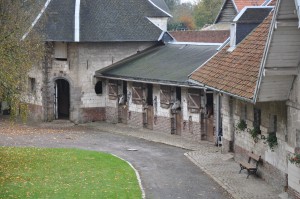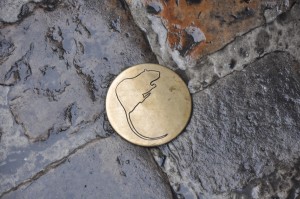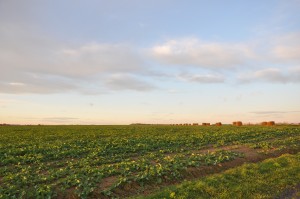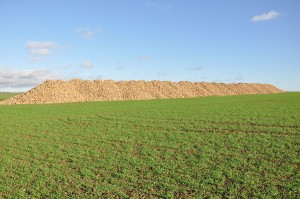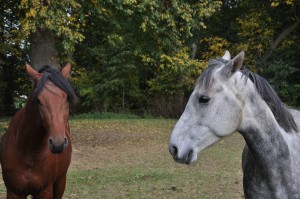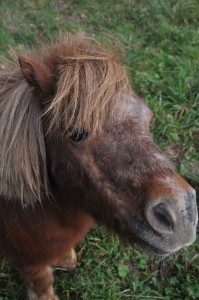What is not to love about this set of light-filled rooms on the second floor, with their old beams and serene quiet. The occasional vehicle rumbles by on the street beyond the kitchen. From the other side horses nicker conversationally. Gîte Les Tilleuls, “Lime Trees,” is also a working stable.
We are up early this morning. Perhaps we are finally getting onto European time; perhaps we benefited from that extra hour last night of which we were entirely unaware until a woman at the Office de Tourisme in Arras informed us of the “falling back” of the clocks. The next tour of Les Boves, the ancient quarries underneath the city, would start at three forty-five, she said. How could that be, I asked, as it was already four. No, she smiled, it is just three, the time changed last night. Whoops.
Arras is mix of the ancient and the rebuilt. Threatened on three sides by the Front, it was shelled into near oblivion. British and New Zealand sappers built a network of tunnels through the limestone quarries under the city from which thousands of troops emerged at the Battle of Arras in 1917. With all the city’s subterranean history, it seems only right that its punning emblem is the rat. Arras, pronounced “ah-rahss” with a rolling “r,” was once pronounced “ah-rah,” the second syllable sounding like the French for “rat.”
At any rate it is not quite eight a.m. and we are both up, showered, dressed and breakfasted, and a load of laundry is cycling and coings are poaching on the stove. Not too sure about that last project. The knobby yellow fruits,a gift from Nicole in Montsec, turned brown as soon as peeled them; my knife is dull and the coings are hard, so quartering and coring them is a challenge. Still, now that they are in a soup of water, orange juice, red wine and spring-flower honey, they are looking promising.
My Dear One is researching what we refer to as the “French vegetable.” About a third of the fields from Lorraine to Picardy are green with this low, leafy plant. We wondered about it in 2002 when we pulled a sprig furtively from the ground. On this excursion, speculations were achieving the status of obsession. My Dear One thought they were sugar beets. They looked to me like some kind of winter plant, something that might rotate with other crop. Then we began to see mountains of brown tuberous things everywhere. Potatoes, we assumed, but they seemed too large and misshapen. We paused yesterday afternoon by a heap, pulled out the trusty Swiss Army knife and sneaked a sample. It was sorta tasteless, hard, nothing one might want to eat.
We consulted the Internet for the facts. The plants are indeed sugar beets and France is the world’s great sugar-beet farmland. The beets are also planted in rotation with other crops; they carry with them a pest which is effectively combated by the chemicals released by the rapeseed family, and the crops seem often to grow side by side. Sugar beets are tasteless and the greens have nothing of the sweetness of the leaves of beets we cook for borscht and pickle. Sugar beets are processed for sugar and the pulp is used for a variety of purposes including the production of breakfast cereals. Ain’t Wikipedia useful!
These few days have had to be planned out rather more carefully than most. Yesterday was Sunday and hours of operation are unpredictable. Today is Monday, a day when museums and shops often take a day off. It is also Hallowe’en and that makes tomorrow, Tuesday, All Saints Day, a holiday here. Yesterday we stocked up at the local Carréfour, a ubiquitous grocery chain.
Today I introduced my Dear One to the horses–Vadim, Radjah, Taj Mahal, and Philou, and the rotund miniature, Quaramel–with gifts of sugar.
The poached coings? They turned out pretty darn well. The flesh was tender but not soft, the taste slightly earthy but sweet, and the syrup of coing, orange, honey and red wine was downright delicious. Every day they sat in the refrigerator, they turned redder. Weird but wonderful.

